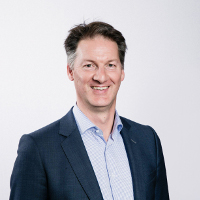Realising the opportunities of the circular economy
From a linear to circular economy
As the world’s population is set to rise to more than nine billion by mid-century, many forward looking businesses realize we need a new industrial model. For more than 150 years, the linear economy has dominated in which materials have been extracted to make new products, powered by fossil fuel energy. However, the planet’s resources are finite and it is no longer viable, many believe, to continually extract virgin resources in a ‘take, make and waste’ linear system.
This is why interest in the circular economy is gaining ground. This is about making products that are designed to have several product life cycles via reuse, remanufacture, refurbishment or recycling systems. Tackling the problem of climate change, the circular economy is also about using more renewable energy. It makes business sense, creating new value out of materials that would otherwise be thrown away. Recent research from McKinsey and the Ellen MacArthur Foundation suggest that global industry could generate at least a trillion additional dollars every year as a result of material cost savings.

Circular
economy
facts
-
About circular economy
The circular economy model is aimed at keeping raw materials in closed loops.
-
Ellen McArthur Foundation
DLL partners with the Ellen McArthur Foundation, who works in education, business innovation and analysis to accelerate the transition to a circular economy.
-
Finance in the circular economy
In over 60 programs, DLL has developed with its partner finance solutions that drive towards the circular economy.
Whitepaper: the impact of compliance on life cycle management
Which laws, regulations and standards should manufacturers, dealers and resellers take into account when moving assets into a new life? And what impact will it have on their operations?
Role of service-based models
As the world economy enriches more people and adds to the swelling middle classes, we will need to make more goods in a sustainable way. McKinsey research suggests that annual consumption in the rising markets will shoot up to $30 trillion by 2025, up from $12 trillion in 2010. Carrying on as we are, we would need five planets to keep the goods flowing.
Interest in a new, sustainable and profitable business concept is on the rise. In a circular economy, the role of consumer is replaced by that of a user. This does require a different mindset. Companies include service-based models enhancing this mindset, like pay per use and pay for performance. We find that through collaboration and through working together with our partners through the lifecycle value chain, we are finding we can make the shift to the circular economy.
Want to know more about circular economy?
Follow our LinkedIn page to get the latest news, insights, and ideas related to DLL’s sustainable added value of leasing.

Egbert de Jong
VP Product Development & Life Cycle Asset Management
Contact me if you would like to have more information.
Thank you
We will get back to you as soon as possible.